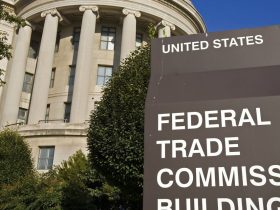Bond yields rose on Tuesday as revived inflation angst trumped concerns of a slowing global economy.
What’s happening
-
The yield on the 2-year Treasury
BX:TMUBMUSD02Y
rose 3.7 basis points to 4.908%. Yields move in the opposite direction to prices. -
The yield on the 10-year Treasury
BX:TMUBMUSD10Y
climbed 3.1 basis points to 4.216%. -
The yield on the 30-year Treasury
BX:TMUBMUSD30Y
rose 3.7 basis points to 4.334%.
What’s driving markets
A batch of weak economic data was shrugged off by fixed-income traders, with bond yields moving higher as inflation concerns held sway.
U.S. investors returned from the long Labor Day weekend facing news that China’s service sector activity grew at its slowest pace in eight months in August, and a gauge of business activity in the eurozone hit its lowest since November 2020.
However, benchmark Treasury yields moved higher as investors focused on last Friday’s nonfarm payrolls report that showed the U.S. labor market still in good health, and comments from Cleveland Federal Reserve President Loretta Mester, who said inflation remained too high.
The sight of oil prices
CL.1,
hitting 2023 highs at the start of the week has added to anxiety that inflationary pressures will be revived, forcing the Fed to keep interest rates higher for longer.
Markets are pricing in a 93% probability that the Fed will leave interest rates unchanged at a range of 5.25% to 5.50% after its next meeting on September 20, according to the CME FedWatch tool.
The chances of a 25 basis point rate hike to a range of 5.50 to 5.75% at the subsequent meeting in November is priced at 36%.
The central bank is not expected to take its Fed funds rate target back down to around 5% until June 2024, according to 30-day Fed Funds futures.
U.S. economic due on Tuesday include the July factory orders at 10 a.m. Eastern.
What are analysts saying
“The recent run-up in oil prices is already setting us up for some hotter August CPI prints, so any further gains there are going to be a fresh hurdle for central banks in their quest to get inflation back to target,” said Jim Reid, strategist at Deutsche Bank.
“That concern was evident among sovereign bonds, which sold off mainly thanks to higher inflation expectations,” he added.
Read the full article here









Leave a Reply